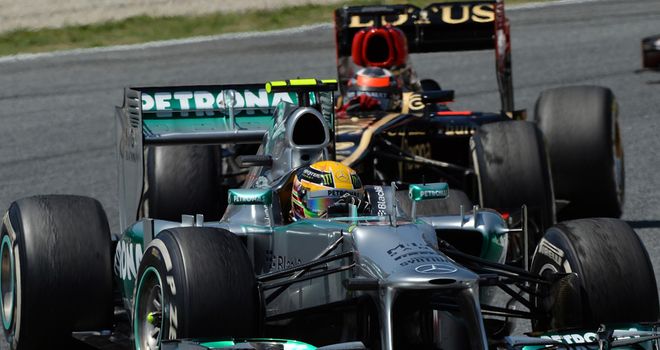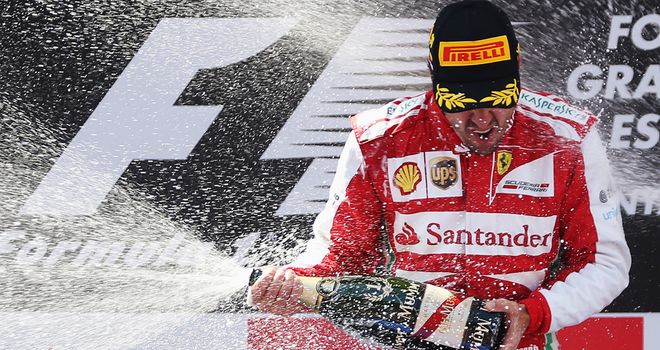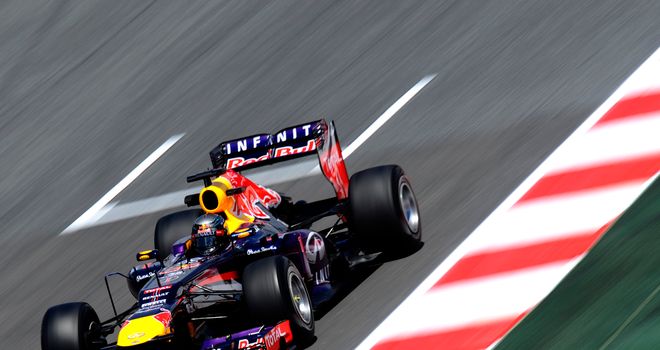THESE have been heady days for Chen Sisi, star of a song-and-dance group run by China’s nuclear-missile corps. For weeks her ballad “Chinese dream” has been topping the folk-song charts. She has performed it on state television against video backdrops of bullet trains, jets taking off from China’s newly launched aircraft-carrier and bucolic scenery. More than 1.1m fans follow her microblog, where she tweets about the Chinese dream.
Related topics
Ms Chen is playing her part in a barrage of dream-themed propaganda unleashed by the Communist Party. Schools have been organising Chinese-dream speaking competitions. Some have put up “dream walls” on which students can stick notes describing their visions of the future. Party officials have selected model dreamers to tour workplaces and inspire others with their achievements. Academics are being encouraged to offer “Chinese dream” research proposals. Newspapers refer to it more and more (see chart). In December state media and government researchers, purportedly on the basis of studies of its usage, declared “dream” the Chinese character of the year for 2012.
It was, however, one very specific usage just before that December publication which set the country dreaming. On November 29th, two weeks after his appointment as the party’s general secretary and military commander-in-chief, Xi Jinping visited the grandiose National Museum next to Tiananmen Square. Flanked by six dour-looking, dark-clad colleagues from the Politburo’s standing committee, Mr Xi told a gaggle of press and museum workers that the “greatest Chinese dream” was the “great revival of the Chinese nation”.
Soft places
The adoption of a personal slogan—one that conveys a sense of beyond-normal wisdom and vision in a short, memorable and perhaps somewhat opaque phrase—has been a rite of passage for all Chinese leaders since Mao Zedong. Mr Xi’s “Chinese dream” slogan is exceptional, though. Its demotic air can be read as a dig at the stodgy catchphrases of his predecessors: the “scientific-development outlook” beloved of Hu Jintao; the even more arcane “Three Represents” cherished by Mr Hu’s predecessor, Jiang Zemin. It makes no allusion to ideology or party policy. It chimes, quite possibly deliberately, with a foreign notion—the American dream. But it is calculated in its opacity. Previous slogans, such as Deng Xiaoping’s “reform and opening up”, could be broadly understood in terms of policy. The dream seems designed to inspire rather than inform.
The symbolism of the setting in which Mr Xi first gave voice to his slogan was more telling than the words that accompanied it. The National Museum’s “Road to Revival” exhibit is a propaganda romp through China’s history since the mid-19th century. Its aim is to show China’s suffering at the hands of colonial powers in the “century of humiliation” and its eventual glorious recovery under party rule. (The millions of deaths from starvation and political strife under Mao, and the bloody crushing of anti-government unrest under Deng, go unremarked.) Mr Xi’s words implied that the Chinese dream, in contrast to its American namesake, was about something more than middle-class material comfort. His backdrop made it clear that he was flexing his muscles as a nationalist and as a party believer.
Since that debut in November Mr Xi has returned to the idea of the dream on many occasions. In March the Chinese dream was the main subject of his acceptance speech to the National People’s Congress, China’s parliament, on being appointed state president. In early April, at an annual forum attended by foreign political and business leaders on the tropical island of Hainan, Mr Xi said the Chinese dream would be fulfilled by the middle of the century. On the following day the party’s propaganda chief, Liu Yunshan, ordered that the concept of the Chinese dream be written into school textbooks to make sure that it “enters students’ brains”.
Mr Xi’s repetition of the slogan, as if rallying demoralised troops, hints at the party’s sense that for all its stellar economic achievements, it is still struggling to win public affection. He has been trying to address this by talking tough on corruption (“fighting tigers and flies at the same time”) and waging war on government extravagance (only “four dishes and a soup”). To this end he has cultivated a man-of-the-people style; many believed a report in a pro-Communist Hong Kong newspaper that he had taken a ride in a Beijing taxi, until state media denied it. The dream rhetoric fits with that image.
It is also distinctively Mr Xi’s. The term had been used in the titles of a couple of Chinese books in recent years. It had also been used at times in foreign commentary on China’s rise. But it was not in common use before Mr Xi’s trip to the museum.
Tales in the sand
Where did the slogan come from? Quite possibly the New York Times. Last October, in the run up to Mr Xi’s ascension, the Times ran a column by Thomas Friedman entitled “China Needs Its Own Dream”. Mr Friedman said that if Mr Xi’s dream for China’s emerging middle-class was just like the American dream (“a big car, a big house and Big Macs for all”) then “another planet” would be needed. Instead he urged Mr Xi to come up with “a new Chinese dream that marries people’s expectations of prosperity with a more sustainable China.” China’s biggest-circulation newspaper, Reference News, ran a translation.
According to Xinhua, a government news agency, the Chinese dream “suddenly became a hot topic among commentators at home and abroad”. When Mr Xi began to use the phrase,Globe, a magazine published by Xinhua, called Mr Xi’s Chinese-dream idea “the best response to Friedman”. Zhang Ming of Renmin University says Mr Xi may have deliberately used the term as a way of improving dialogue with America, where it would be readily understood. Mr Xi had seen the American dream up close, having spent a couple of weeks in 1985 with a rural family in Iowa. (He revisited them during a trip to America last year as leader-in-waiting.)
That does not mean his musings on the dream have been designed to meet Mr Friedman’s appeal for more sustainable growth. Rhetorically at least, such a need was central to party policy long before the latest slogan. Mr Hu’s “scientific-development outlook” was all about being greener, even if his ten years in power saw little abatement of relentless environmental damage. Through protests and media commentary the public is pressing Mr Xi to clean up more vigorously. But he has been shy of making commitments. On November 15th, in his first speech after taking over as general secretary, Mr Xi mentioned “a better environment” toward the end of a list of what he said were the public’s wishes. Better education and more stable jobs were at the top.
If Mr Xi’s Chinese dream is not Mr Friedman’s, what is it? So far that is being left deliberately vague. The unwritten rules of succession politics in China require Mr Xi to keep his policy preferences close to his chest at the beginning of his term in office, and to stick to the guidelines laid down by his predecessors. He is all but obliged to work towards the targets of the five-year economic plan that was adopted under Mr Hu in 2011 (which is strong on the need for more environmentally friendly growth). He has to stick to the party’s longer-term plans as well: the attainment of a “moderately well-off society” by the time of the party’s 100th birthday in 2021 (one year before Mr Xi would have to retire); the creation of a “rich, strong, democratic, civilised and harmonious socialist modern country” by 2049, the 100th anniversary of the founding of the Communist nation. (The meaning of these words has never been made clear, but officials are explicit that “democratic” does not involve multi-party politics.) If precedent is any guide, Mr Xi would not begin to start any serious tinkering with policy until a meeting of the party’s central committee in the autumn, a year after his assumption of power.
The vagueness of the “Chinese dream” slogan allows Mr Xi to embrace these inherited aims while hinting that, under his rule, change is possible. But the lack of specificity also carries risks. It provides a space in which the Chinese can think of their own dreams—which may not coincide with Mr Xi’s. Since November the term has not merely been promulgated. It has been discussed and even argued about across the political spectrum, both in articles published by the official media and in outpourings online. In effect, the public is defining the dream by itself.
Nationalists see their own dreams validated. To them the tall and portly Mr Xi represents a new vigour in Chinese politics after Mr Hu’s studied greyness. His talk of China’s revival plays to their sense that China has a rightful place at the top of the global pecking-order.
In 1820, as some historians reckon and Chinese commentators like to point out, China’s GDP was one-third of the world total. Then the reversals of the century of humiliation brought it low. By the 1960s, China’s GDP had dropped to just 4% of the world total. Now it has recovered to about one-sixth of the world’s GDP—and at least 90% of America’s—in purchasing-power parity terms, according to the Conference Board, a business research organisation. Nationalists eagerly await the day when China’s economy becomes once more the biggest in the world by any measure, a day which many observers expect to dawn while Mr Xi is still leader.
Mr Xi appears anxious to secure the support of nationalists, particularly within the armed forces, and dream-talk helps. In December, during an inspection tour of the navy in southern China, Mr Xi spoke of a “strong-army dream” and said that resolutely obeying the party’s orders was the “spirit of a strong army”—a swipe at liberals who argue that the army should be removed from the party’s direct control. In March the army issued a circular to troops saying that the “strong-nation dream of a great revival of the Chinese people” was in effect a “strong-army dream”.
Sound and fury
Nationalist hawks, especially military ones, are a constituency Mr Xi cannot ignore. In recent years their views have been expressed far more openly thanks to an easing of controls on publishing by officers. Shortly after Mr Xi first spoke of the Chinese dream in November, the publishers of a 2010 book called “China Dream: Great Power Thinking and Strategic Posture in the Post-American Era” rushed to bring out a new edition. The official media, happy to discuss Mr Friedman’s prior use of the dream notion, have made no suggestion that the book has any connection to Mr Xi’s slogan. But it is the most prominently displayed work on the dream theme in a large state-owned bookshop near Tiananmen Square. The book’s author, Liu Mingfu, a senior colonel, argues that China should regain its position as the most powerful nation in the world, a position it had held for a thousand years before its humiliation.
Mr Xi prefers to avoid any public talk of surpassing American power. During a trip to Russia in March (his first foreign excursion as president) he said fulfilment of the Chinese dream would benefit all countries. But as Henry Kissinger suggests in his 2011 book “On China”, Mr Liu’s views reflect “at least some portion of China’s institutional structure”. As tensions roil with Japan, Vietnam and the Philippines over maritime territorial claims, the role of these shadowy figures among China’s security policymakers is a topic of much speculation. Mr Xi has not been helping to clear the air (see Banyan).
China’s chest-thumping has not been restricted to its neighbours. While contriving not to mention America by name, an April white paper on defence carped about its security “pivot” towards Asia making the situation in the region “tenser”. The state-controlled media went further. China Daily, a Beijing newspaper, quoted “military experts” as saying that the Chinese government had no problem with America seeking involvement in the region’s prosperity. But China was concerned, it said, that America’s renewed focus on its alliances in Asia “might be aimed at China and disturb the ‘Chinese dream’ of national rejuvenation.”

The white paper was released just after John Kerry, America’s secretary of state, visited Beijing in April. The trip was aimed at reassuring China of America’s commitment to good relations following the re-election of Barack Obama and the handover to Mr Xi. “You’ve all heard of the American dream,” Mr Kerry said in Tokyo after leaving Beijing. “Now Beijing’s new leader has introduced what he calls a ‘China dream’.” Mr Kerry tried to reconcile the two by proposing that America, China and other countries work towards a “Pacific dream” of co-operation on issues ranging from job growth and climate change to pandemic disease and proliferation.
But this suggestion did little to abate the two countries’ mutual wariness. The idea of a Pacific dream, said one Chinese commentator, was an attempt to spread the American dream into every corner of Asia in order to ensure that “America’s dominance of this region will never pass into another’s hands”. To Chinese nationalists that is more like a nightmare.
Although Mr Xi doubtless feels a need to play towards such sentiments, he probably shares his predecessor’s wariness towards at least some of their proponents. China’s modern history offers many examples of anti-government movements cloaked in nationalist garb. And his dream-talk is clearly also intended for a wider audience. While his speech in November on the Chinese dream appealed to the nationalist cause, by March his language had turned softer. “In the end the Chinese dream is the people’s dream,” he said at the National People’s Congress, omitting any reference to the century of humiliation. (Around this time the English-language media, which initially went back and forth, plumped for “Chinese dream” over “China dream” as a translation, thus subtly emphasising the people over the nation.) An article published by Caixin Media, a Beijing news portal, said there was “nothing short of a competition between the American dream and the Chinese dream”. But it said China needed to address this by boosting its “moral appeal to others”. Doveish voices abound in China too.
Playing house
By tangentially evoking the American dream with his language, Mr Xi may be trying to reassure the country’s new middle-class, a constituency that could present a powerful challenge to party rule if it becomes seriously disaffected. Officials predict that economic growth will be slower under Mr Xi than it was under Mr Hu. Mr Xi is suggesting that this will not mean a tightening of middle-class belts.
Li Chunling, a specialist in middle-class studies at the Chinese Academy of Social Sciences, says that the dream of China’s wealthier middle-class members is to live like their American counterparts (and to see them in action: hence a surging enthusiasm for travel abroad). Mr Xi would not want to let them down. But Ms Li suggests this will be hard. Among the better-off, worries about China’s development in the coming years, including risks related to pollution and social unrest, are prompting growing numbers to emigrate, she says.
Mr Xi will face difficulty selling the idea that China can be “rich and strong” while remaining a one-party state. According to Zhang Qianfan, a liberal legal scholar at Peking University, “more than three-quarters [of the Chinese] would associate the Chinese dream with a dream of constitutionalism”. “Constitutionalism” is the belief that the constitution—which, except in its preamble, does not mention any role for the party itself—should have an authority that overrides the whims of the party. In January a state-controlled newspaper,Southern Weekend, tried to publish a new-year message entitled “The Chinese dream: a dream of constitutionalism”. Only with a division of powers, said one passage, could China become a “free and strong country”. The article was replaced with a censored version—entitled “The Chinese dream is nearer to us than ever before”—stripped of the original’s comments on the importance of the constitution. Several journalists went on strike in protest.
Mr Xi has spoken of the importance of the constitution, but he has not mentioned “constitutionalism”—and he has avoided the use of the word “free” when talking about the dream. In unpublished remarks made during his trip to southern China in December, and later leaked by a journalist, Mr Xi said: “The Chinese dream is an ideal. Communists should have a higher ideal, and that is communism.” He said the reason for the Soviet Union’s collapse was its straying from ideological orthodoxy. In other words, he would be no Gorbachev.
But Mr Xi’s talk of a dream will always run the risk of sharpening appetites for change. Mr Zhang says that 150 people, many of them prominent scholars, have signed a petition for full implementation of the constitution that he launched last December. In late March People’s Forum, a website run by the People’s Daily, the party’s main mouthpiece, tried to gauge public support for Mr Xi’s dream by carrying out an online survey. The “Chinese dream” slogan, it said in an introduction, had “reignited hopes for the great revival of the Chinese nation”. The page was quickly deleted after around 80% of more than 3,000 respondents replied “no” to questions such as whether they supported one-party rule and believed in socialism.
According to Ms Chen’s rather syrupy song, the Chinese dream is “A dream of a strong nation…a dream of a wealthy people”. Mr Xi seems of the same opinion—and has, as yet, been little more specific. In the absence of substance, Mr Xi’s talk of a dream is creating space for a lively debate over where China should be heading. For the time being it may suit Mr Xi to keep the course he will be following unclear. But demands for clarity can only grow louder.
Copyright 2013. The Economist Magazine. All Rights Reserved













